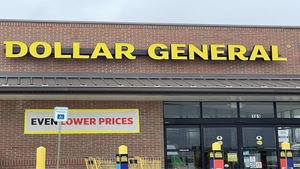The Keys to a Successful Health and Wellness ProgramThe Keys to a Successful Health and Wellness Program
‘Meet your team where they are at,’ says Kelly McCutcheon of Hopdoddy Burger Bar. “Meet your team where they are at,” said Kelly McCutcheon of Hopdoddy Burger Bar during a session at the National Restaurant Association Show.

“The best wellness programs are ones that meet your team where they are at,” said Kelly McCutcheon, VP of people for Hopdoddy Burger Bar, an Austin, Texas based quick-service restaurant and bar.
McCutcheon (right in photo above) and Damian Hanft, VP of culture and brand ambassador for Sandy Springs, Ga.-based Inspire Brands, owner and franchisor of restaurant chains such as Arby's, Buffalo Wild Wings and Dunkin', spoke May 23 at the National Restaurant Association Show about what makes—and how to create—a good employee health and well-being program.
While 9 out 10 business have an employee well-being program, McCutcheon and Hanft said, the duo underscored the importance of building a proactive program vs. a reaction-based program—and that means looking at well-being holistically.
McCutcheon and Hanft called attention to the “wellness wheel,” which shows how physical, social, emotional, financial, environmental health and more all play a factor. “The whole premise here is that there are eight different components to the wellness wheel and all of them support mental health,” McCutcheon said.
Hanft added that companies can also use the wheel to assess their current programs and determine in which areas they are excelling and the others that they can improve.
Other tools companies can use to assess their programs include external tools such as the Workplace Mental Health Assessment, which McCutcheon said “can help you know where your team and your business are today,” and the Mental Health Employer Cost Calculator. “If you need to create a business case for why wellness is important, it’s great to have that statistic of what it’s costing you, and that’s what the mental health calculator will do. It tallies up the toll that mental health takes from a dollars and cents perspective,” McCutcheon added.
In their presentation, McCutcheon and Hanft cited data that for every 100 employees, stress can cost a business more than $300,000 a year on average.
Internal assessments are important as well. Engagement surveys, poll surveys or “simply just asking: What are the challenges, what are the struggles?” can best determine the needs of employees, Hanft said.
At Inspire Brands, “our employees … are asking for customized, individualized benefits tailored to their needs,” Hanft said, adding that there’s more demand for “folks being able to pick out what they want, when they want it and when they need it.”
And “leverage your assets,” McCutcheon added.
“Odds are good that if you have a gap in a wellness program or wellness needs, you also probably have a strength somewhere else in your business. So in the spirit of ‘many hands make light work’ leverage your team,” she said.
At Hopdoddy, that meant finding out what its employees are passionate about. The company found that one of its chefs was into fitness, so he created fitness videos that Hopdoddy shared on its app. The company also found an accountant who is doubles as a yoga instructor, so she created some mindful meditation tips Hopdoddy also shared.
At the end of the day, however, McCutcheon said “it’s not enough for there to be resources in an app. … It has to be utilized.” That means the program must be easy to access and easy to use, McCutcheon and Hanft said
About the Author
You May Also Like






